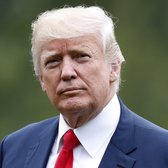Nominate someone from his list of justices to replace Antonin Scalia
Donald Trump
“I am looking to appoint judges very much in the mold of Justice Scalia. I'm looking for judges — and I've actually picked 20 of them so that people would see.”
Trump-O-Meter

Promise Kept